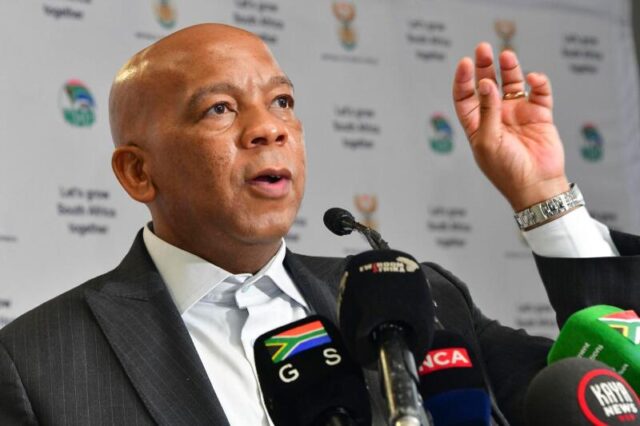The Minister in the Presidency for Electricity, Dr Kgosientsho Ramokgopa, said that the current stages of load shedding were a necessary trade-off to upscale planned maintenance by Eskom ahead of winter with the long-term goal to end load shedding.
THE MINISTER in the Presidency for Electricity, Dr Kgosientsho Ramokgopa, said that the current stages of load shedding were a necessary trade-off to upscale planned maintenance by Eskom ahead of winter with the long-term goal to end load shedding.
This comes as Ramokgopa said he had met with the board of the newly established National Transmission Company of South Africa (NTCSA), which he said had hit the ground running in charting its course.
It was now anticipating engaging with a private sector keen on investing in the grid extension.
With lessons learnt from several studies commissioned by various bodies, including the World Bank and National Treasury’s VGBE report, a 10-point plan had been put in place for Eskom to improve its efficiency and, ultimately, permanently end load shedding.
Sticking to the narrative that the trend-line of Eskom’s performance had improved over the past year, Ramokgopa said with the progressive increase in megawatts from the Unplanned Capacity Loss Factor (UCLF), Eskom was ramping up planned maintenance to avoid extensive breakdowns down the road.
“We could go on the short-term intervention expedient and reduce this maintenance by up to 50%. But we guarantee you that there will be a deterioration of these assets. Then in three months’ (time) there’ll be total collapse, significant failures and we (Eskom) are going to find it very difficult to recover these units,” he said, emphasising that the improvement in the UCLF was an opportunity for higher planned maintenance.
For example, he said, in May 2024 there had been improvement from the 17,369 megawatts on record as having been lost in May 2023
“If we had not ramped up that planned maintenance … or reduced it from the current levels by anything between 25% and 50%, we would have completely eradicated load shedding, at least between those periods, but it’s important that we play the long-term game,” he said.
A summary of the threads from reports over the past five years, dating back from a 2019 ministerial report by a technical review team; to a World Bank commissioned assessment in 2022; another Eskom board commissioned study; and now the VGBE report done by the National Treasury had produced a 10-point plan to address load shedding.
The plan ticks off benchmarks on Eskom’s drive for efficiency, from the standard of power plant conditions, coal management, fraud and corruption to fiscal relief, among other points.
The recently released VGBE report had assessed 14 coal stations between March and May last year and attributed their poor performance to a dysfunctional and overly complex management system within Eskom Generation.
It recommended that Eskom focus on conducting operations and maintenance in line with industry standards and proposed a decentralisation of decision-making, including by providing power station managers with full budget responsibility and accountability.
“We must be precise, methodical and efficient, I am confident of our prospects going into the future,” Ramokgopa said on Monday.
However, Eskom’s Generation executive, Eric Shunmagum, said there were some inaccuracies in the report concerning the Medupi and Kusile power plants that were being ironed out with the National Treasury.
On NTCSA, Ramokgopa said there was keen interest from the private sector to invest in the roll-out of transmission lines as the entity has done groundwork in it.
He said the ministry would share its proposals with the NTCSA, having studied various options from peer countries which had been tailored to South Africa’s conditions.
“I’m confident there will be symmetry in relation to the need for us to access that private financing, but it’s now about how you do it.”
Eskom has indicated that it has funding available for the first three years of the Transmission Development Plan (TDP), during which only 1,675km of line is planned for construction, leaving more than 14,000km proposed for construction by 2032 to be implemented in the latter five years.
Ramokgopa said that given Eskom’s financial constraints, external financing could help play a role in accelerating the TDP, particularly, in the Northern Cape, Eastern Cape and Western Cape.
– BUSINESS REPORT








